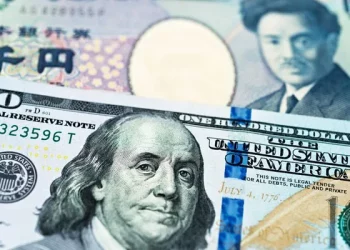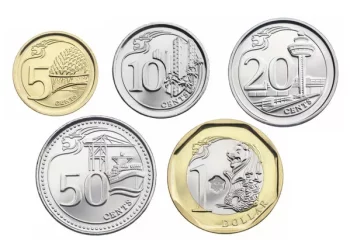In the world of foreign exchange (forex), the value of one currency in relation to another plays a central role in determining the profitability of transactions. Currency exchange rates fluctuate constantly, influenced by various economic, geopolitical, and market factors. One of the most common currency conversions is between the Indian Rupee (INR) and the US Dollar (USD).
For many individuals, businesses, and investors, understanding how much 40,000 Rupees are worth in dollars is not just about a simple conversion. It’s about understanding the implications of that conversion in terms of purchasing power, economic impact, and the broader dynamics of the forex market.
This article will walk you through the process of converting 40,000 Rupees into US dollars, discuss the factors affecting exchange rates, and provide insights into the broader context of currency trading and investment.
1. Understanding the Exchange Rate Between INR and USD
To begin with, the exchange rate between the Indian Rupee (INR) and the US Dollar (USD) determines how much 1 INR is worth in USD. Exchange rates can either be fixed or floating, and in the case of the INR/USD pair, it is a floating exchange rate. This means that the rate at which the Rupee is exchanged for the Dollar can fluctuate due to supply and demand in the forex market.
As of the current market trends, 1 US Dollar is typically worth around 80 to 85 Indian Rupees. However, this rate is dynamic and can change throughout the day based on various factors such as inflation, interest rates, government policies, and market sentiment.
2. Converting 40,000 Rupees into Dollars
Given the range of the exchange rate (approximately 80-85 INR per USD), the conversion of 40,000 Indian Rupees into US Dollars can vary slightly depending on the rate at the time of the transaction. Let’s break down the conversion process:
At an exchange rate of 80 INR per USD, 40,000 INR would be equal to:
40,000/80=500 USD
At an exchange rate of 85 INR per USD, 40,000 INR would be equal to:
40,000/85 ≈470.59 USD
So, depending on the prevailing market rate, converting 40,000 Rupees could result in anywhere between 470 and 500 US Dollars. This fluctuation can have significant implications for anyone looking to convert large amounts of money, especially in the context of international trade, travel, or investment.
3. Key Factors Affecting the INR/USD Exchange Rate
To understand why exchange rates fluctuate, it’s essential to consider the underlying factors that influence currency values. Below are some of the key determinants that impact the INR/USD exchange rate:
Interest Rates
Central banks, such as the Reserve Bank of India (RBI) and the Federal Reserve in the United States, play a crucial role in determining interest rates. When the Federal Reserve raises interest rates, the US Dollar tends to appreciate because higher interest rates attract foreign investment. Similarly, if the RBI raises interest rates, the Indian Rupee could also appreciate due to increased foreign investment.
Inflation Rates
Inflation is another important factor that influences currency values. If India’s inflation rate is higher than that of the US, the Rupee will typically weaken against the Dollar because inflation erodes the purchasing power of a currency. On the other hand, lower inflation in India compared to the US can result in the appreciation of the Rupee.
Economic Growth and Stability
A strong and stable economy tends to boost the value of a country’s currency. If the Indian economy grows at a faster pace than the US economy, the Rupee could appreciate against the Dollar. Conversely, if the US economy is performing better, the Dollar may strengthen relative to the Rupee.
Political Stability
Political uncertainty can lead to volatility in the forex market. Any political instability in India, such as a change in government, policy shifts, or geopolitical tensions, could lead to a depreciation of the Indian Rupee. Similarly, any uncertainty in the US, such as elections or trade policies, can affect the value of the US Dollar.
Trade Balance and Foreign Investment
A country’s trade balance—the difference between its exports and imports—can also impact its currency’s strength. India has a trade deficit, meaning it imports more than it exports, which puts pressure on the Rupee. In contrast, the US has a trade deficit but also attracts significant foreign investment, which supports the Dollar.
Speculation and Market Sentiment
Forex markets are also influenced by speculation. Traders and investors who anticipate that the Indian Rupee will strengthen or weaken against the US Dollar can drive buying and selling activity, affecting exchange rates. Market sentiment, influenced by news, rumors, and global events, can also lead to short-term fluctuations in the currency pair.
4. The Role of Forex Trading
Foreign exchange trading is a highly liquid and active market, with an average daily trading volume exceeding $6 trillion globally. Traders, investors, and institutions engage in forex trading to profit from changes in currency values. These market participants buy and sell currencies based on their expectations of how exchange rates will move.
When it comes to the INR/USD pair, forex traders closely monitor economic reports, geopolitical developments, and technical indicators to predict the direction of the exchange rate. Traders might also use strategies such as:
Day Trading: Buying and selling the INR/USD pair within a single trading day.
Swing Trading: Holding positions for several days or weeks to capture medium-term trends.
Scalping: Taking advantage of small price movements over very short time frames.
Additionally, institutional investors and multinational corporations engage in forex trading to hedge against currency risk or to conduct cross-border transactions. For example, a company in India importing goods from the US may need to convert Rupees to Dollars to pay for its purchases.
5. Practical Implications of Currency Conversion
For individuals or businesses who need to convert 40,000 Rupees into US Dollars, understanding the exchange rate is just one part of the equation. There are several practical considerations:
Currency Conversion Fees
When converting currencies, financial institutions such as banks, exchange services, or online platforms charge a fee for the service. These fees can range from a flat rate to a percentage of the total amount being exchanged. Additionally, the exchange rate offered by these institutions may be slightly less favorable than the market rate.
It’s important to shop around and compare rates to ensure you are getting the best deal when converting currencies. Many online forex platforms provide real-time exchange rate information, making it easier for individuals to track fluctuations and time their conversions for the best possible outcome.
Travel and Remittances
For individuals traveling from India to the US or sending money to family members abroad, understanding the conversion of 40,000 Rupees into US Dollars is crucial for budgeting and planning. Currency fluctuations can have a direct impact on the amount of money you will receive or spend when traveling or sending remittances.
For example, if the exchange rate is unfavorable at the time of conversion, the recipient of the remittance may receive less value in USD. Similarly, travelers may find that their budget is stretched thinner if the exchange rate has moved against them.
Investment Decisions
For investors, currency fluctuations can have significant implications. A change in the INR/USD exchange rate could affect the value of foreign investments or returns. For instance, an Indian investor holding US Dollar-denominated assets might see a decrease in the value of those assets when converted back to Rupees if the Rupee strengthens.
6. Impact of Exchange Rate Movements on the Indian Economy
The exchange rate between the Indian Rupee and the US Dollar can have wide-reaching effects on the Indian economy. A weaker Rupee can make exports cheaper and more competitive in global markets, boosting export-driven sectors. However, a depreciating Rupee can also make imports more expensive, leading to higher inflation and increased costs for businesses and consumers.
Additionally, a weaker Rupee can impact the cost of foreign debt, as it becomes more expensive for the Indian government and businesses to service loans denominated in US Dollars.
Conclusion
Converting 40,000 Rupees into US Dollars is a straightforward process, but the factors that influence the INR/USD exchange rate are complex and multi-faceted. Understanding these factors, including interest rates, inflation, economic growth, political stability, and market sentiment, is crucial for anyone involved in forex trading, international business, or cross-border investment.
Whether you’re a traveler, an investor, or a business owner, being aware of exchange rate fluctuations and the implications of currency conversion can help you make informed decisions and better manage your finances. With the global nature of currency markets and the increasing importance of forex trading, understanding the dynamics of the INR/USD pair remains a valuable skill for anyone involved in global economic activities.
In the end, the value of 40,000 Rupees in Dollars may fluctuate, but understanding the underlying market forces at play will allow individuals and businesses to navigate these fluctuations with greater confidence and knowledge.
Related Topics:



























